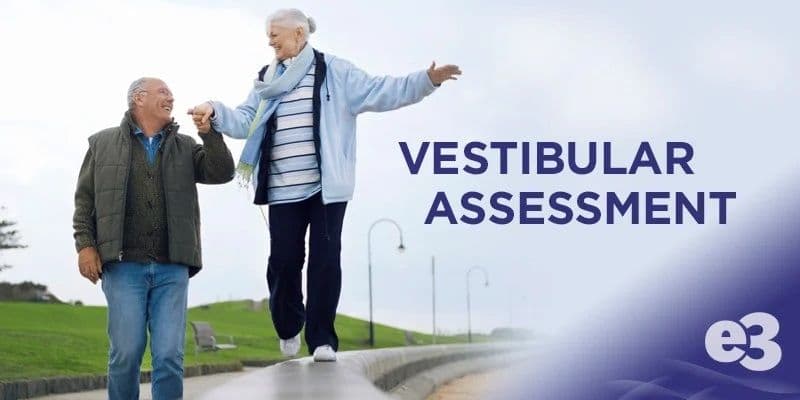Vestibular Assessment Checklist

When you think about it, the balance humans have on two feet is remarkable. It may take us a few months to get the hang of it, but once we do, it becomes involuntary. That is unless one suffers from a balance disorder.
The human balance system is quite complex, and it’s reliant on multiple sensory systems such as the vestibular, visual, somatosensory, and central nervous systems. A disturbance to any of these can result in poor balance, dizziness, headaches, and a host of other symptoms.
Tests Conducted in Vestibular Assessment
There are numerous tests that you can conduct to determine if a patient’s balance problems are a result of vestibular dysfunction. We’ve listed some of the more common methods below.
VNG/ENG – Videonystagmography/Electronystagmography
Both VNG and ENG are used to measure eye movements with the help of computer analysis. The measurement takes place while you perform a number of tasks, such as simulated hyperventilation, or manipulating a patient’s head or body. Vibration testing and caloric testing – how the ear responds to changes in temperatures – may also be used.
ENG testing involves electrodes being placed around the patient’s eyes. VNG, which is more commonly used, involves patients wearing goggles and sitting in a dark room while the infrared video technology measures their responses.
Rotary Chair Testing
Rotary chair testing is often used in conjunction with VNG and ENG. It involves the patient sitting in a motorized chair while their head is secured. You then rotate the patient in different directions while the patient’s gaze is fixed or moving. The test measures the relationship between eye and head movements, the timing of their movements, and the symmetry of them.
One common rotary chair test requires you to rotate the chair, with the patient in it, rapidly in one direction at a constant speed for one minute. You then decelerate the chair quickly while the patient’s nystagmus – repetitive, involuntary eye movements – is measured.
CDP – Computerized Dynamic Posturography
The vestibular system is one of the nervous system’s most important tools in controlling posture. What the CDP tests measure is how well this relationship is working.
Postural stability is assessed using a movable platform, combined with a number of different tests that can include unexpected platform movements, uneven surfaces, and a variety of other factors and conditions.
VEMP – Vestibular Evoked Myogenic Potentials
VEMP measures the patient’s response to sound stimulation. Using electrodes that are placed on the forehead or under the eyes, the patient will listen to a series of sounds delivered via headphones, including clicks and tonal bursts.
If you’re interested in learning more about these tests, the American Institute of Balance offers comprehensive workshops on each. You can even build your own curriculum so you can focus solely on the tests you’re most interested in learning about. By completing these workshops, you’ll have a better understanding of how to conduct each test, demonstrate competency-administering protocols for patients of all ages, interpret the results, and more.
For those of you who are already balance pros, take a look at our extensive line of vestibular/balance products. We have everything from VNG goggles to rotary chairs from leading brands like Interacoustics and Micromedical. Take a look at our offerings and get in touch with your local e3 office today!
